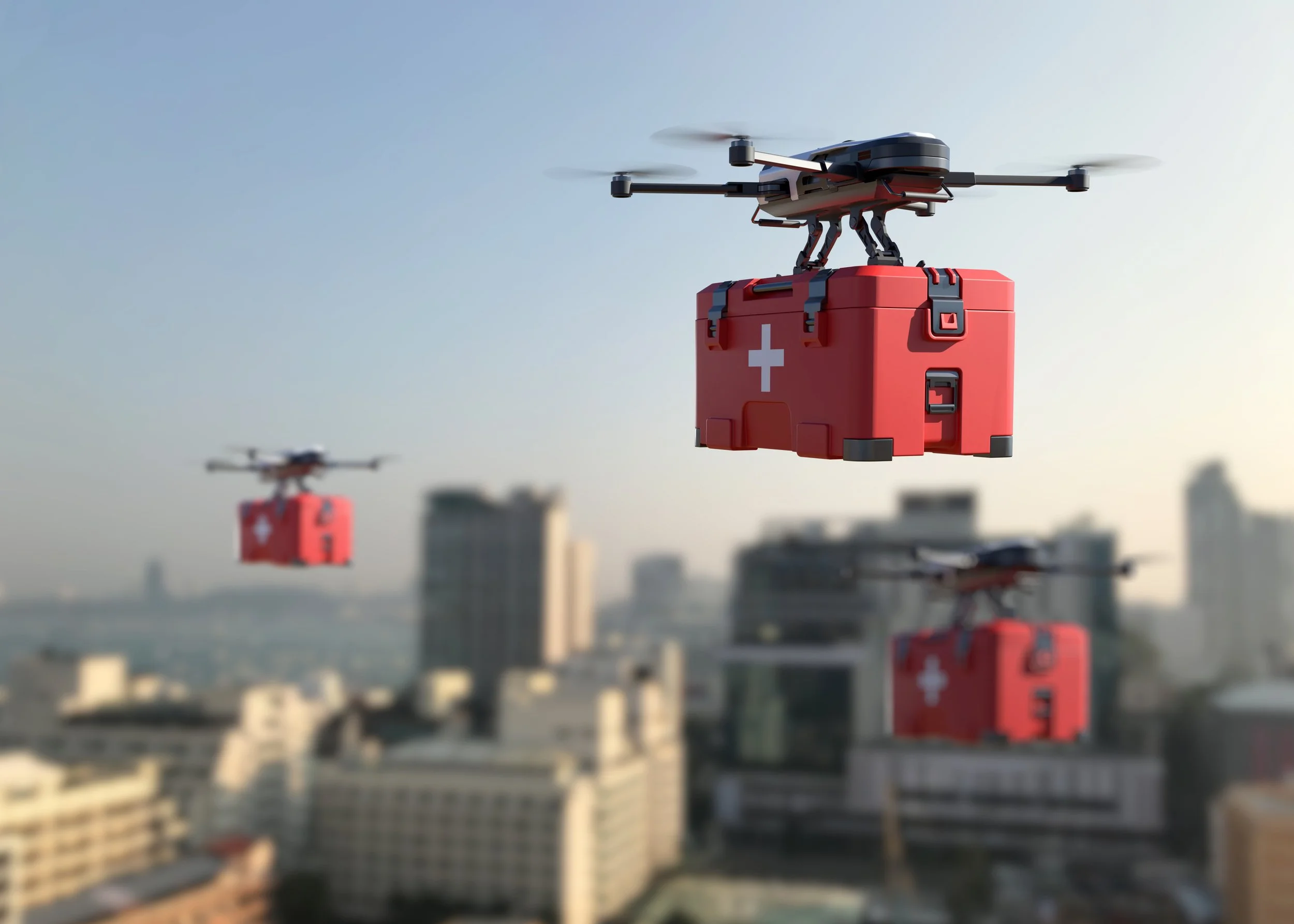Digital Infrastructure Takes Flight
For most of us, the idea of using flight to get to and from work, receive a parcel, access medical care, buy food, or do any number of everyday things, sets the imagination alight.
In many ways, advanced aerial mobility (AAM) is a class of revolutionary technologies that will help usher a Jetsons-like future into the present. In other ways, it’s simply a logical extension of the terrestrial transportation network we have today. Either way, AAM has the enormous potential to change how we go about our daily lives—and with new modes like delivery drones and flying taxis on the horizon, the moment to begin preparing has arrived.
But what exactly needs to happen in order to smoothly integrate sky-based transportation for people and goods?
New Physical Infrastructure
Perhaps most obvious is the need to evolve the current physical infrastructure—specifically, additions, such as vertiports, that enable aerial passengers and operators to access AAM in an organized, contained fashion. These facilities will of course need to be well-located within the city so that aircraft operators can maximize their service to passengers. They will need to be built quickly in order to gain scale and drive down costs so aerial modes are affordable for as many residents as possible. In many ways, creating physical infrastructure for AAM will follow the same playbook as many, many other modes that have come before.
New Digital Infrastructure
What makes AAM different is an opportunity afforded by the digital age: creating a parallel digital infrastructure that underpins and connects every vertiport, aircraft, vehicle, shared public asset, operator, and public agency from Day 1. Most 20th century modes are rooted in a physical user experience with some latter-day, ad hoc digital retrofitting; by contrast, AAM will be a seamless digital-first experience, similar to the way an Uber or Lyft ride always begins with an interaction on a smart phone.
A smooth rollout for AAM will require unprecedented levels of cooperation between the public and private sectors. This is where Lacuna comes in—our company is rooted in the fundamental concept that operators, States, and cities are partners with different responsibilities but the same goals: to grow the user base and operate safely, efficiently, and sustainably. This concept is coming to fruition in City Conductor, the foundation for our transportation operating system (tOS).
Designed to fill the liminal space between the partners, a mature tOS can provide unprecedented communication (machine-to-machine, human-to-human, and everything in between) to ensure innovators and regulators aren’t working at cross purposes, but together for mutual benefit. Using APIs, standards, and workflows consistent from city to city (and state to state, and country to country), aircraft operators and public agencies can minimize the time and budget spent on initial integration and everyday operations.
Planning for AAM: Accentuate the Positive, Eliminate the Negative
Making changes to existing communities is always a delicate exercise, but with a digital infrastructure providing a new wealth of information about real-world transportation patterns, public agencies can understand AAM in the context of where residents already live, work, and play—enabling staff to plan new vertiports with confidence.
Cities and operators can build goodwill by avoiding many of the mistakes of the micromobility rollout and creating a positive introduction that helps drive AAM adoption. For example, having policies (e.g. permitted aircraft types and sizes, hours of operation, frequency of landing and takeoff, etc.) in place on Day 1 will reduce the risk of residents being negatively impacted by noise pollution or vehicle emissions. As AAM becomes more affordable and ubiquitous, cities can use tOS data and various public policies to ensure that AAM is equitably distributed across the city. And they can plan to maximize connections with ground modes, both physically and digitally, for a smooth multimodal experience—for both people (mass transit, micromobility, for-hire vehicles, etc.) and freight (distribution centers, delivery vehicles, etc.).
However, it’s in no one’s interest to re-create ground transportation’s drawbacks; for example, delivery vehicles circling the block waiting for curb space is wasteful and creates congestion. A true tOS has the capability to bring to both air traffic and ground traffic the kind of orchestration required for high-demand assets like loading zones and landing zones to be equitably shared and utilized as efficiently as possible.
As we introduce AAM into the fabric of our existing ground transportation system, we need to be mindful of the impacts this new mode will have on the ground. Flyovers, landings, and takeoffs in sensitive areas will require careful consideration and operational collaboration between public agencies and operators. A tOS allows local agencies to regulate landing and takeoff behaviors while informing Federal agencies, whose job it is to regulate airspace, where these sensitivities are, and avoid flyovers when it's safe to do so. A tOS combined with open interfaces ensures uniform integration in every city, large and small. The result is a transportation network that is publicly accepted—safe, profitable, and equitable for everyone.
With the right digital infrastructure for communication, collaboration, and planning, AAM could be a win-win-win for all stakeholders: a remarkable new amenity for residents; an exciting opportunity for new revenue or operational efficiency for private enterprise; and a new means to help cities reduce congestion on the ground, close the transportation equity gap, and eliminate greenhouse gas emissions. To dig deeper into City Conductor, transportation operating systems (tOS), or Lacuna’s AAM expertise, please get in touch.


